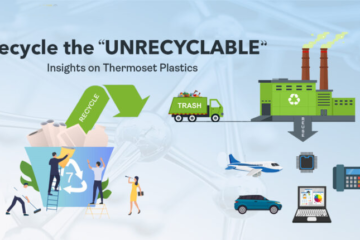Where will I store ‘Avengers: Endgame’ and hundred other movies in 2025?
 Is it possible to imagine a life without data?
Is it possible to imagine a life without data?
What you are thinking is right!
Every second of our life is converted as a Data, even every beat of our heart and every step we walk is recorded as a data using smart devices. Approximately 6.12 megabytes of data is created every hour. As the population increases, the amount of data also increases day by day. Amount of stored data is nearing 40 Zettabyte (1 zettabyte = 109 TB).
Does human have enough storage medium to store data?
Currently, large servers are used to store the data which cost high to maintain. In order to avoid data crash the servers need to be extended every decade. So there is a need for vast server farms and all the servers should be monitored & maintained 24 X 365
What will be the alternative source to store data?
While searching for a largest storage medium in the world, researchers have found a clue in DNA (Deoxyribonucleic acid). DNA is a naturally available immensely dense storage medium which stores complete genetic information of an organism in each of its cell. The structure and function of each cell is defined by its DNA.
DNA is composed of 4 nitrogen bases (Adenine, Thymine, Guanine and Cytosine) and a sugar phosphate backbone. A single nitrogen base along with a sugar phosphate group is called as nucleotide. These nucleotides are arranged in specific order as a sequence in each cell of an organism. Such sequence differs from person to person. Three adjacent nucleotides known as a codon represent a single amino acid which build protein.
How data is converted into nucleotide sequence?
Data is normally stored in binary format i.e. 0s & 1s. Four combinations of binary numbers such as 00, 01, 10 & 11 code the data together in specific order. Coincidentally, the 4 combinations of the binary numbers represent the four nitrogen bases.
Recently, scientists created synthetic DNA which stores data. In that process, the initial data that is to be stored are converted into binary codes followed by translating it in to nucleotide sequence (e.g. 001111010010101100100001 -> ATTGACCTACAG). Finally, the nitrogen bases in the nucleotide sequence are arranged to form DNA using artificial gene synthesis techniques. Thus, the data is stored in the newly synthesized DNA which is preserved in respective medium under cold condition for future use. Whenever there is a need for the stored data in DNA, the DNA is sequenced and then translated into binary code to obtain the data. Microsoft and University of Washington are jointly working with Twist Bio-science (company working in the gene technology field) to produce synthetic DNA, which can stores upto nearly 1 gigabytes of data such as music video by the band “OK Go”, Human rights in more than 100 languages, etc.
Currently multiple researchers are focusing on bacterial DNA to store data. 1 g of DNA can store upto 215 petabytes of data (1 petabyte = 106TB). This can be achieved through gene editing techniques. The most prominent gene editing technique for data storage is CRISPR – CAS9 technique.
What is CRISPR – CAS9 gene editing?
CRISPR – CAS9 gene editing is a naturally available defence mechanism in a bacterial cell where the invading viral DNA in the first infection is cut into small segments and then the cut portions are inserted into the space between the CRISPR (clustered regularly interspaced short palindromic repeats) in bacterial DNA. CAS 9 protein associated with the CRISPR which acts as a molecular scissor to cut the DNA. The invaded viral DNA interspaced between the CRISPR is used as a memory to kill the same virus during the second infection by binding with CAS 9 protein. Similar mechanism is used in gene editing by combining template DNA sequence with CAS 9 protein to cut the bacterial DNA at specific region and inserting the DNA sequence of interest (coded with particular data) into the cut portion using gene insertion techniques (i.e. non homologous end joining (NHEJ) / homology dependent recombinant.)
The data encoded DNA in bacterial cells can be multiplied in number and stored in cold condition. The coded sequence can be read and converted into binary set to retrieve the stored data.
The data can be retrieved whenever there is a need, but it will take nearly a whole day to get the data from the DNA in the respective format such as words / image / video etc. The cost for retrieving such data from DNA is high. In future, the duration & cost can be reduced with the help of technological improvements. At present, scientists are planning to store data in the bacterial DNA which are not frequently required.
Researchers in Harvard University in 2017, have encoded black & white image of human hand (both right and left) and multiple images of a galloping horse. These images were stored within a single bacterial population to form a GIF. The researchers have also filed a patent (WO2017142999) for the method of modifying the nucleic acid of the cell for storing data in genome of a living cell. Currently, research is going on in this area to store videos in the bacterial genome.
Have you ever imagined you will access your favorite movie ‘Avengers: Endgame’ from the back of a bacteria?
Bacteria as a better storage medium – can be a reality sooner than you think!
Contributed by Janani Baskar
Related Article : Smart contact lens – Wink and Snap













